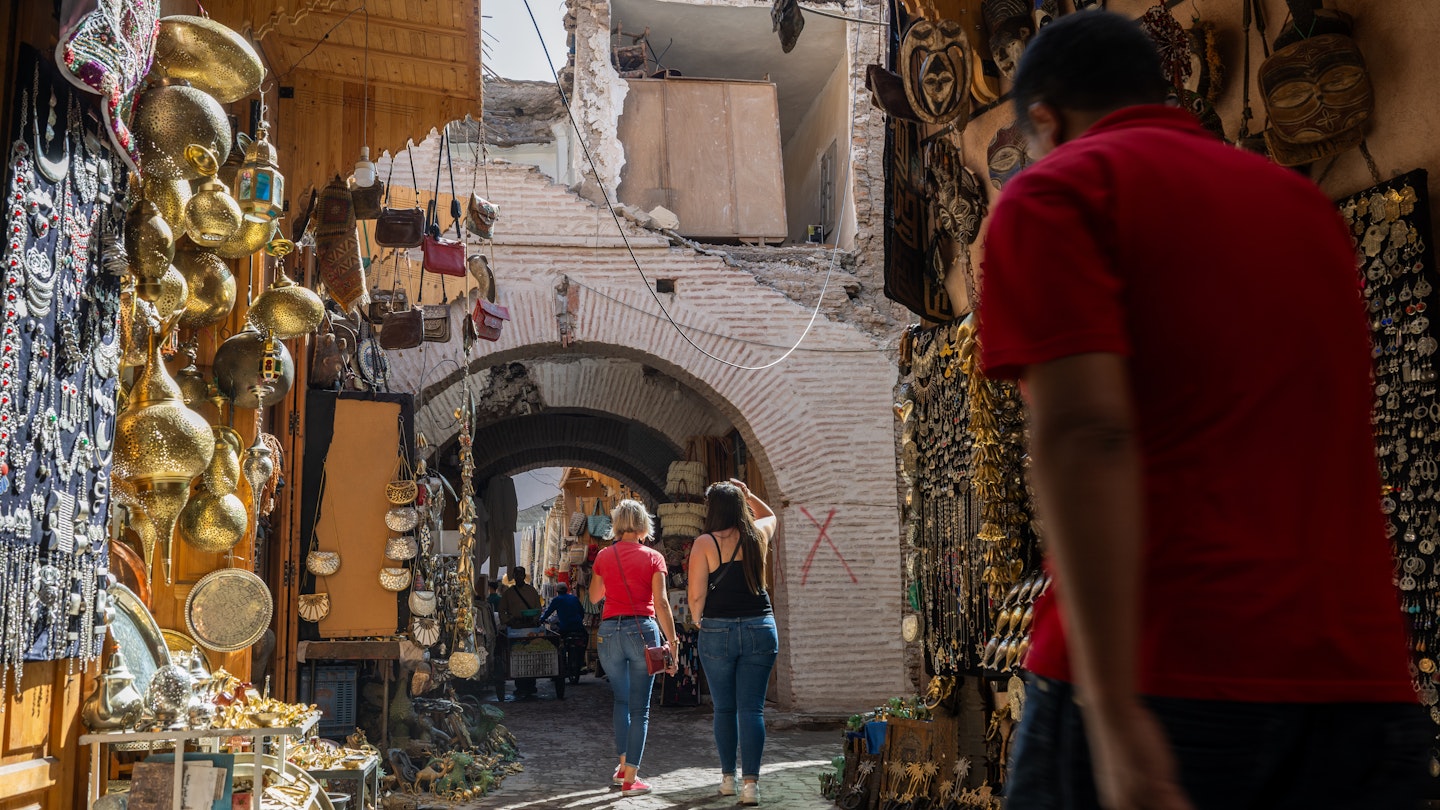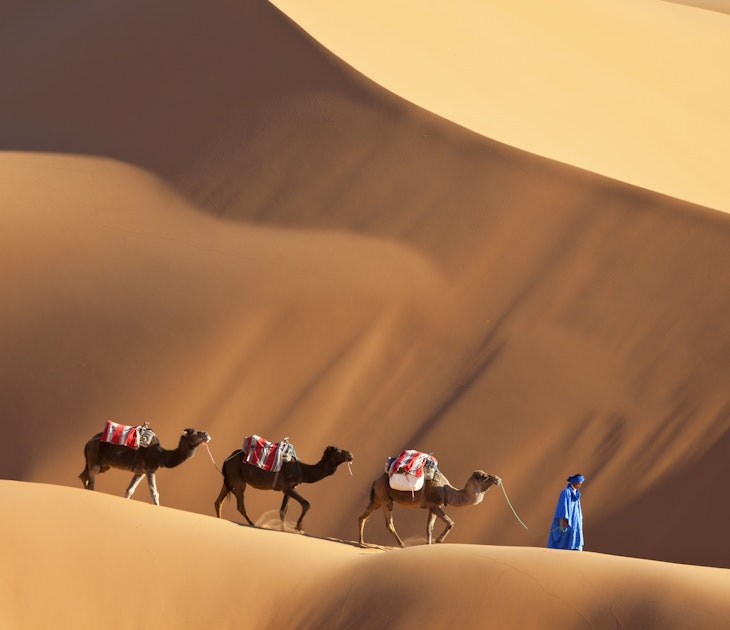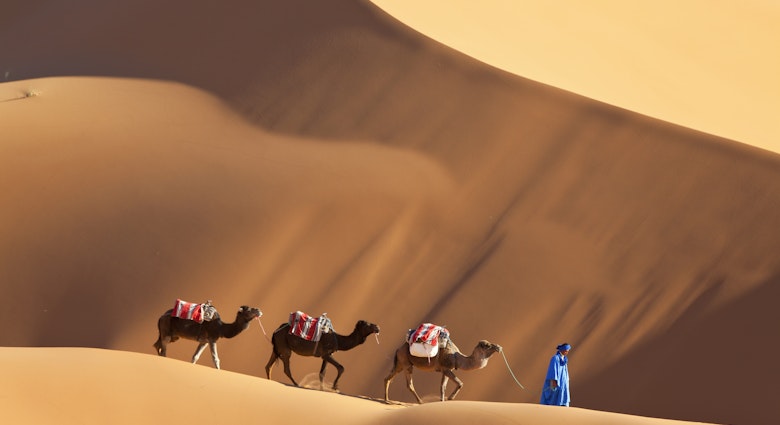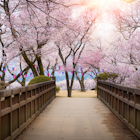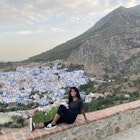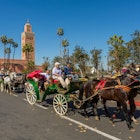As anyone who’s visited Morocco will tell you, it’s the local people who make any trip there truly memorable.
The hospitality and kindness you experience will stay with you long after you’ve returned home. But should you be planning on a trip to the beguiling country after the devastating earthquake in September 2023?
A devastating disaster
“Despite being in shock after the quake,” says Elsewhere Morocco expert Nawfal Serhir, “the people we met when we delivered aid to villages around Taroudant were as welcoming as ever. Even though many were homeless and grieving, they still greeted us warmly with a smile.”
The 6.8-magnitude earthquake hit just after 11pm on Friday, September 8, devastating remote villages in the High Atlas Mountains, killing more than 3000 people and injuring almost twice that number. Traditional homes built of rammed earth collapsed. Concrete buildings such as shops and schools cracked and fell apart at odd angles.

The government was quick to send in heavy machinery to clear the roads so that relief could reach the villagers. Where earthmovers couldn’t proceed, helicopters dropped doctors and firemen, while soldiers went in on foot accompanied by mules carrying supplies. Local and foreign-aid agencies have delivered food and warm clothing, and Moroccans from all over the country have sent aid packages. King Mohamed VI was one of thousands who gave blood; the monarch has announced major compensation for those whose homes were damaged or destroyed.
The quake was perplexingly choosy – razing one village yet sparing another in the next valley. People affected are now living in tents, their homes too dangerous to enter. The rebuilding program is already under way, though winter is around the corner and snow is imminent.
Some 60 miles north of the earthquake’s epicenter lies the country’s premier tourist destination, Marrakesh. A few people lost their lives in the city, some buildings were damaged, part of the walls crumbled and the minaret of a mosque lay in ruins. Some of the historic buildings in this Unesco World Heritage site are now closed while they are checked for structural problems.
Where does all this leave potential visitors? Is it all doom and gloom? Would you feel guilty having a fun holiday while people are injured or homeless? Should you even think of coming now?
The answer is a resounding yes.
In fact, come soon – as your visit is crucial to the local relief effort. There’s no need to feel guilty or to cancel your trip. Your support is vital now and you will make a valuable contribution to the economy by underpinning local jobs.
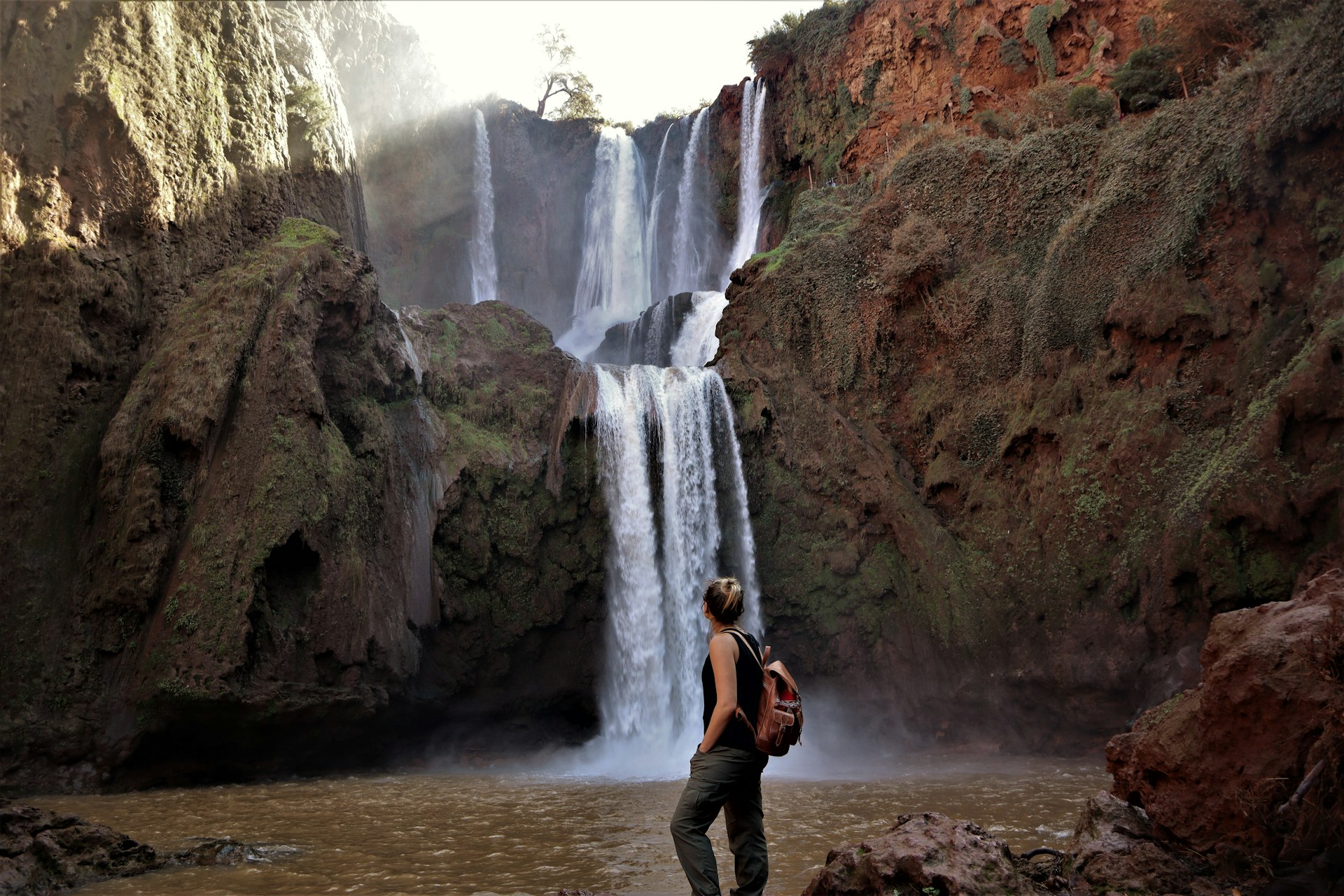
Here’s what visitors to Morocco can expect after the earthquake
- All airports are operating as normal and transport services such as trains and buses are running as normal.
- Major roads, such as the N9 through the High Atlas between Ouarzazate and Marrakesh, are clear and have not been damaged.
- Some of the historic monuments in Marrakesh such as the weaving museum Dar Si Saïd, the new Museum of Intangible Heritage, the Musée des Confluences at Dar El Bacha, the Saadian Tombs, the Bahia Palace and the Badia Palace are temporarily closed.
- There are plenty of other monuments and sights to visit, such as the lovely Jardin Secret or the almost 20 museums in the medina. Fortunately, the magnificent, newly restored Ben Youssef Medersa is still open, the souks are as inviting as ever and the evening street-food carnival on Djemaa El Fna is just as much fun.
- In the Ville Nouvelle (new city), where there was no damage, the Jardin Majorelle, Yves Saint Laurent Museum, chic boutiques, art galleries and excellent restaurants await.
- If you’re going trekking or mountain biking in the High Atlas, routes are open and safe. Local guides will put your safety first and take you on secure routes. It’s the areas around the quake’s epicenter – the villages of Moulay Brahim, Amizmiz, Ijoukak and Talaat N’Yaaqoub – that you will avoid.
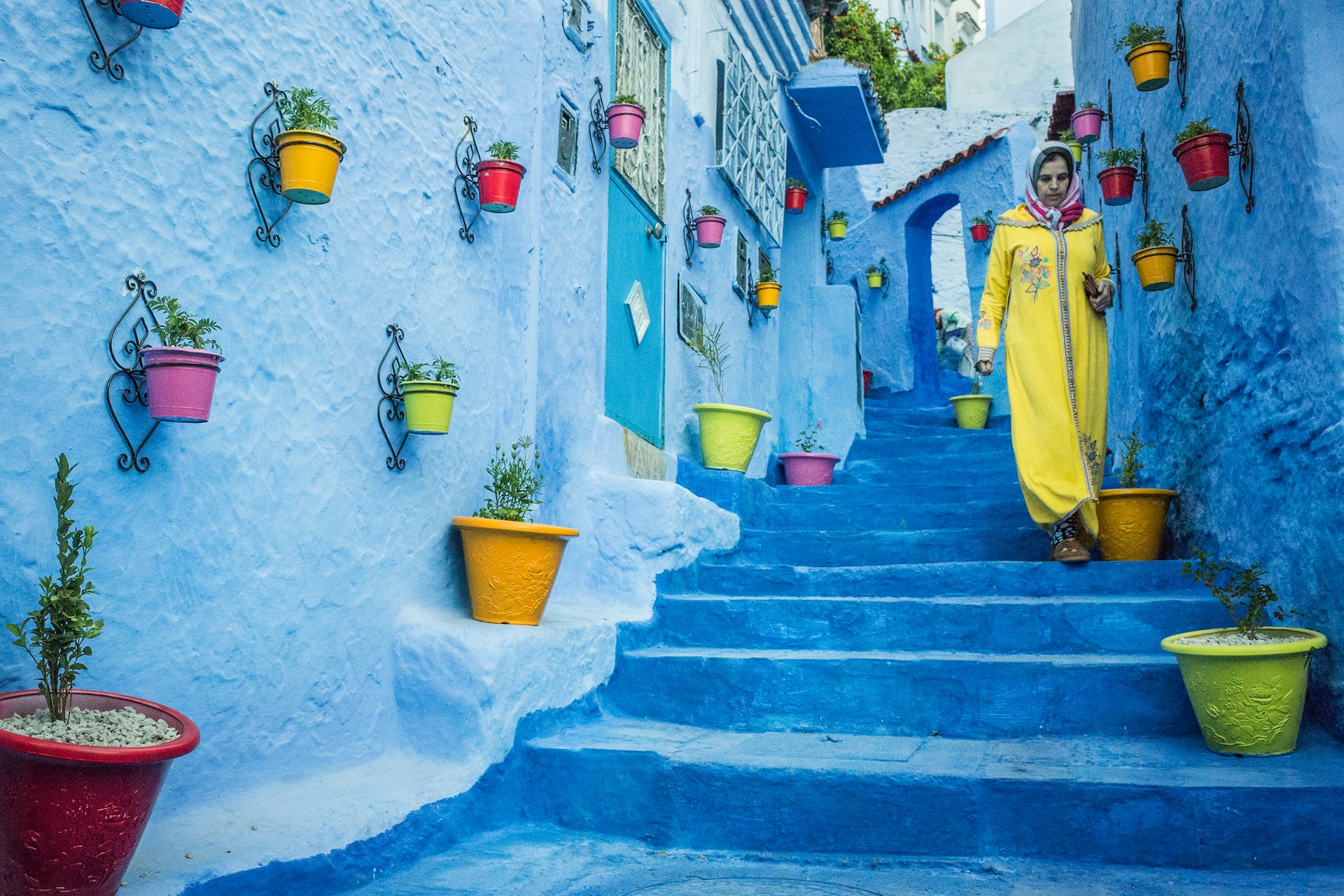
Explore places in Morocco far from the earthquake epicenter
The earth trembled across a country the size of Texas on that fateful Friday night, but fortunately there has been little damage beyond the High Atlas and Marrakesh. Don’t forget the wealth of fabulous places to visit in Morocco beyond red city of Marrakesh. Fez has an ancient medina with spectacular architecture, and Chefchaouen is soaked in that charming blue hue. You can catch a thrilling wave on the coast (especially in winter), ride a camel across Saharan dunes and discover the delights of Moroccan cuisine. And there are other hiking options, such as the cedar forests and gentle slopes of the Middle Atlas and the more northerly Rif Mountains.
Wherever you are, in a city riad or a rural lodge, the resilient Moroccan people will steal your heart with that welcoming smile and glass of frothy mint tea.
How you can help
People in the mountains need warm clothes, shoes and blankets for the rapidly approaching winter weather. Buy supplies locally, then pop into Café Clock in Marrakesh as it’s a collection point for donations of any kind.
If you’re going into the mountains, ask your guide if there’s anything you could take for the people there.

